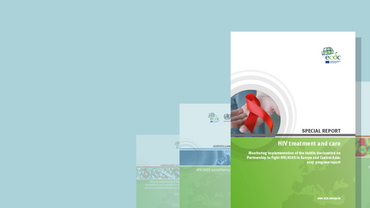Evidence brief: Progress towards reaching the Sustainable Development Goals related to HIV in Europe and Central Asia
This evidence brief summarises the progress towards UN Sustainable Development Goal 3.3 to ‘eliminate the epidemic of AIDS’ in Europe and Central Asia. It is largely based on data collected between February and August 2022 by the European Centre for Disease Prevention and Control (ECDC) to monitor implementation of the 2004 Dublin Declaration.
Executive Summary
The United Nations Sustainable Development Goal (SDG) 3.3 aims to end AIDS by2030. This brief provides an update on the progress in relation to HIV prevention, testing and treatment, AIDS-related deaths and HIV-related stigma and discrimination in Europe and Central Asia (Annex 1 indicates which countries have met which targets).
For prevention, although pre-exposure prophylaxis (PrEP) availability and uptakehas increased across the region, it is still not available through health systems in 17countries (five in the EU). Where PrEP is available, there is room for significantimprovement in the number of people accessing it.
With regard to testing and treatment, Europe and Central Asia are currently noton track to meet the 2025 targets set by UNAIDS, with only 83% of all people livingwith HIV knowing their status, 85% of people who know their status on treatment,and 93% of those on treatment being virally suppressed.
In Europe and Central Asia, the number of new HIV infections and the numberof AIDS-related deaths remain high. Increased and revitalised efforts need to be made to improve prevention, testing and treatment services in the region to achieve the 2030 target.
There is limited data on the experiences of HIV-related stigma and discrimination, however, available data show an inconsistent picture. Some policyareas reflect more discriminatory legislation and practice than others.
For some indicators, especially those related to stigma and discrimination, asignificant number of countries did not report data. A lack of robust, reliable datapresents a significant challenge to making progress on certain aspects of the HIVepidemic. Improved monitoring systems and reporting are urgently needed to better understand and take action to end the HIV epidemic by 2030.








